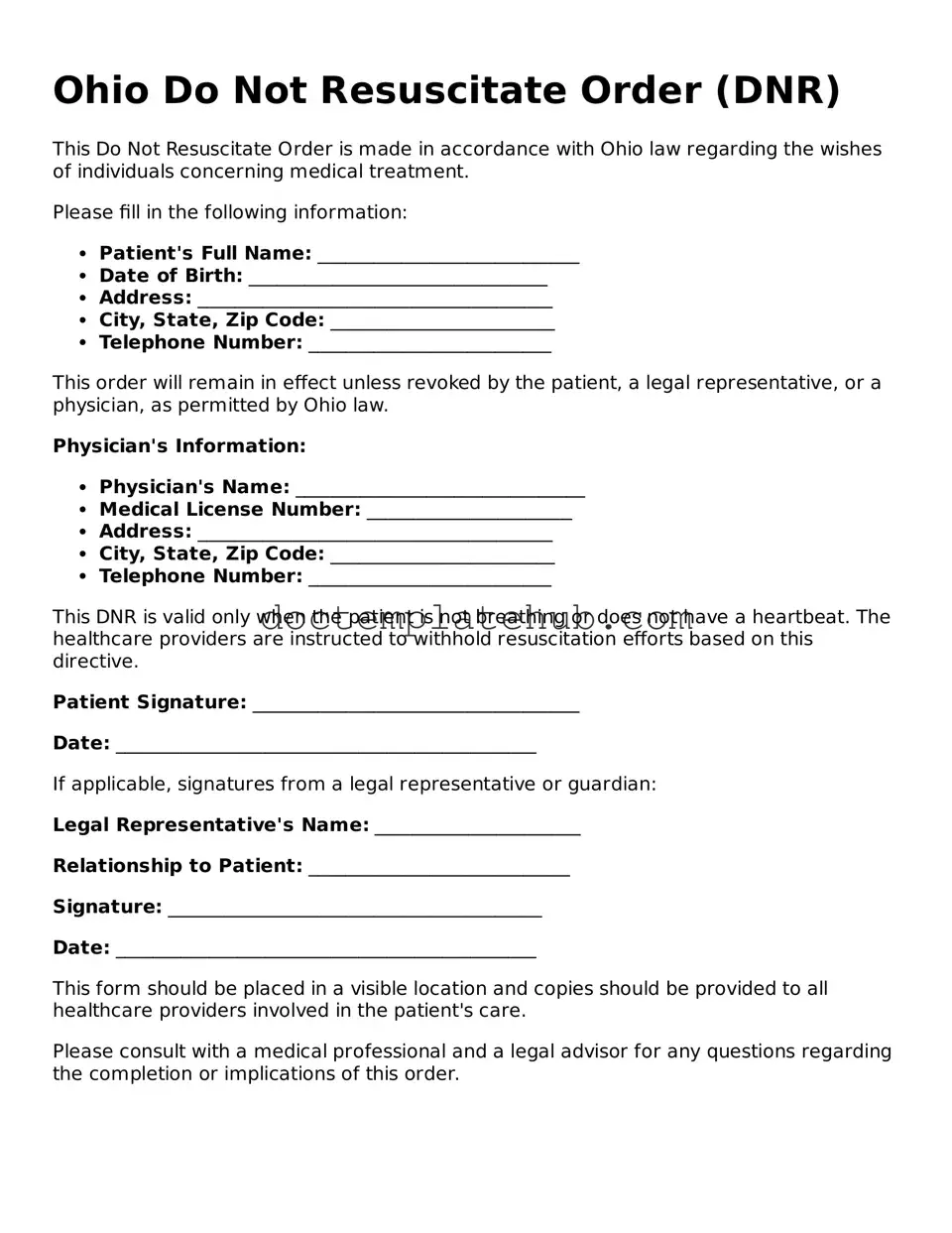What is a Do Not Resuscitate (DNR) Order in Ohio?
A Do Not Resuscitate Order is a legal document that allows a person to refuse cardiopulmonary resuscitation (CPR) and other life-saving measures in the event of a medical emergency. In Ohio, a DNR order is typically used by individuals with serious, terminal, or life-limiting conditions who wish to avoid aggressive medical interventions that may not align with their personal values or wishes regarding end-of-life care.
Who can request a DNR Order in Ohio?
In Ohio, a DNR order can be requested by a patient who is of sound mind and able to make their own healthcare decisions. If the patient is unable to make decisions, a legally authorized representative, such as a family member or healthcare proxy, may request the order on their behalf. It is important that the individual understands the implications of the order and that it reflects their wishes regarding medical treatment.
How is a DNR Order created in Ohio?
To create a DNR order in Ohio, a specific form must be completed and signed. This form must be signed by the patient or their representative, as well as a physician. The form should clearly state the individual's desire not to receive resuscitative measures in the event of cardiac or respiratory arrest. Once completed, the DNR order should be kept in a readily accessible location, such as with the patient’s medical records or at home, to ensure that emergency personnel are aware of the individual's wishes.
Is a DNR Order valid in all healthcare settings?
Yes, a valid DNR order is recognized across various healthcare settings in Ohio, including hospitals, nursing homes, and at home. However, it is essential that the order is properly completed and signed according to Ohio law. Emergency medical services (EMS) and healthcare providers must honor a valid DNR order when responding to a medical emergency. It is advisable for individuals to communicate their wishes to family members and caregivers to ensure that everyone is aware of the DNR order.
Can a DNR Order be revoked?
Yes, a DNR order can be revoked at any time by the patient or their authorized representative. To revoke a DNR order, the individual should communicate their decision clearly to their healthcare provider and ensure that any copies of the DNR form are destroyed or marked as revoked. It is important to inform family members and caregivers of the change to avoid confusion during medical emergencies.
What should I do if I have questions about a DNR Order?
If you have questions about a DNR order, it is advisable to speak with a healthcare professional, such as a doctor or a nurse, who can provide guidance tailored to your specific situation. Additionally, consulting with an attorney who specializes in healthcare law can offer valuable insights into the legal aspects of DNR orders. Engaging in open discussions with family members about end-of-life care preferences can also help clarify any uncertainties regarding DNR orders and ensure that your wishes are respected.
